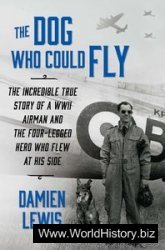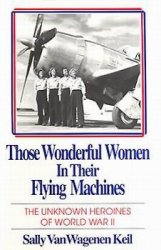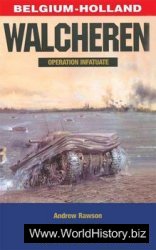The best known of the American intelligence agencies, the Central Intelligence Agency (CIA) was created to coordinate the government’s intelligence operations and give the president quick, clear information for the conduct of domestic and foreign policy.
The CIA had its origins in intelligence operations during World War II. In the aftermath of Pearl Harbor, the fledgling American intelligence community was criticized for not disseminating vital information that could have prepared the U. S. Navy for the surprise Japanese attack in 1941. Government officials believed that a central clearinghouse responsible for coordinating intelligence-gathering operations and the distribution of vital information would prevent another Pearl Harbor. The Office of Strategic Services (OSS), the American intelligence corps that carried out intelligence-gathering activities as well as covert operations behind enemy lines, provided a further example of the need for and possible benefits of having a permanent government agency assigned to carry out these tasks after the war.
As the uneasy alliance between the Allies degenerated into Soviet-American confrontation, President Harry S. Truman supported the need for an intelligence agency to coordinate the acquisition and dissemination of needed information on potential foes. The National Security Act of 1947 created the Central Intelligence Agency.
In theory, the CIA was originally intended to oversee the entire American intelligence establishment, which included the separate intelligence branches of the armed services as well as the Federal Bureau of Investigation. In practice the various intelligence-gathering components within the United States government were not willing to cooperate to the extent envisioned by Truman, especially as the intelligence community dramatically expanded in later years. Instead of coordinating intelligence activities, the CIA concentrated primarily on espionage, also known as HUMINT (human intelligence), and since its inception, it has carried out covert operations.
The two most important divisions within the CIA are the Directorate of Intelligence and the Directorate of Operations. The intelligence section is responsible for placing and/or recruiting spies within foreign governments and using them to gather information vital to American national security. The operations section carries out secret operations against foreign governments sometimes in tandem with but often independent of intelligence collection. The director of Central Intelligence oversees both aspects of the CIA’s operations and acts as the primary liaison between the president and the intelligence community. The agency focuses its attentions on foreign governments, especially those deemed threats to American national security.
The history of the CIA has been inextricably linked with the COLD WAR. The chief target of the CIA’s activities from the very beginning was the SOVIET UNION. The CIA spent much time and money infiltrating various Soviet government organizations, including the Soviet Army and the KGB (the Soviet counterpart of the CIA), and the agency provided much valuable information about Soviet intentions, troop strength, and nuclear missile capability to American foreign policymakers.
More controversial were the activities of the CIA in the Third World, which comprised the primary battlefield of the COLD WAR. Most of the agency’s covert operations were aimed at governments in the developing world that American policymakers feared were leaning toward the Soviet bloc. The administration of Dwight D. Eisenhower placed a good deal of emphasis on covert operations, especially as they were more effective than diplomacy and much cheaper (and less risky in the nuclear age) than all-out war, despite their dubious legality. Eisenhower authorized the CIA to undertake operations that destabilized and overthrew democratically elected governments in Guatemala and Iran. President John F. Kennedy authorized the CIA to carry out a coup attempt against Fidel Castro’s Cuba in 1961 using CIA-trained and - funded Cuban emigres, but the Bay of Pigs initiative failed disastrously. As a result of these and other controversial activities, the CIA came under increased congressional oversight and various presidents have prohibited covert operations that include activities such as assassination.
The end of the cold war in the late 1980s and early 1990s caused the CIA to dramatically change direction. Although some questioned the need for the agency at all, the CIA rapidly made the transition from cold war concerns to such issues as the war on drugs, nuclear nonproliferation, and combating international terrorism.
Further reading: Rhodri Jeffreys-Jones, The CIA and American Democracy (New Haven, Conn.: Yale University Press, 1988); Loch Johnson, America's Secret Power: The CIA in a Democratic Society (New York: Oxford University Press, 1989).
—Matthew M. Davis
Chambers, Whittaker (1901-1961) journalist Whittaker Chambers’s significance stems almost exclusively from his involvement in the Alger Hiss perjury trial in 1948.
Hiss became an infamous target of the House UnAmerican Activities Committee (HUAC), a congressional committee originally convened in 1947 to ferret out communist infiltration of the film industry, a mandate later extended to track down communists from all walks of life. The accusation that Hiss was a communist agent came from Chambers.
Chambers’s past was a checkered one. Born on April 1, 1901, in Philadelphia, and reared in New York, he came from a troubled upbringing. As a youth he had been dismissed from Columbia University. A writer of some talent, Chambers eked out an existence for a number of years as a journalist, all the while flirting with a radicalism he found appealing in the bohemian underworld of New York City. A confessed Communist agent in the 1920s and into the 1930s, Chambers claimed that he had grown disillusioned with communism in the late 1930s. After the Nazi-Soviet pact of 1939, his break with the party became total. In the 1940s, he continued his journalism career and became an editor for two notable publications, Time and the National Review, marking his total about-face from communist agent to conservative reactionary.
Chambers testified before HUAC that, in the late 1930s, Hiss had been a member of the Communist Party. He claimed that he had collected party dues from both Hiss and his wife. Hiss denied that he knew Chambers and that he had had any past affiliation with the Communist Party. Under continued and relentless questioning from HUAC member Richard M. Nixon, Hiss was forced to admit that he had known Chambers, even acknowledging that he had let him use his car and live in his apartment, although Hiss insisted that Chambers had used a different name at the time, that of George Crosley. Still, Hiss denied ever being a communist, and challenged Chambers to repeat his accusations outside of Congress where Congressional immunity would lapse and Hiss could sue Chambers for libel.
In response, Chambers went on the radio program Meet the Press and labeled Hiss a communist. Hiss sued.
Chavez, Cesar Estrada 53

Whittaker Chambers in courthouse corridor, 1949 (Library of Congress)
Chambers then revealed additional information. He testified that Hiss had passed him secret State Department documents to be turned over to the Soviet Union. Chambers dramatically produced microfilms of the documents he claimed to have received from Hiss, documents that were typed copies of State Department records reproduced on a Woodstock model typewriter once owned by Hiss. These were the famous “pumpkin papers,” so called because Chambers said he had kept them hidden in a pumpkin in his vegetable garden.
Unable to be tried for espionage because the statute of limitations had run out, Hiss was tried for perjury. His first trial ended in a hung jury in July 1949. But on January 21, 1950, at the conclusion of a second trial, Hiss was convicted of two counts of perjury for having lied about his communist connections in the 1930s. He spent almost four years in prison.
The exchange between Chambers and Hiss embodied the larger confrontation between New Deal liberalism and resurgent conservatism underlying the cold war and carried with it far-ranging ramifications. Hiss’s past service in the State Department cast further suspicion upon a body already suspected of harboring communists. From a more general perspective, the Hiss-Chambers confrontation aided and abetted the growing tide of McCarthyism, unleashed upon America in the early 1950s.
In the years after the Hiss case, Chambers slid into obscurity. Unable to revive his journalism career, he contented himself with publishing his memoirs telling his side of the controversial Hiss trial. He died in 1961.
Further reading: Sam Tanenhaus, Whittaker Chambers: A Biography (Random House: New York, 1997).
—Matthew Flynn
Chavez, Cesar Estrada (1927-1993) American labor union leader
A second-generation American, Cesar Estrada Chavez was a Mexican-American (Chicano) farmworker, labor leader, and civil rights activist who cofounded the National Farm Workers Association (NFWA), which later became the United Farm Workers of America, AFL-CIO (UFW).
Chavez was born near Yuma, Arizona, on March 31, 1927, to an American family of poor farmworkers of Mexican and Basque descent. After losing their land during the Great Depression, the family became migrants when Chavez was 10 years old. Achieving only an eighth-grade education, Chavez left school to work in the agricultural fields full-time to support his family. Following a two-year enlistment in the navy, in 1948 he married Helen Fabela, whom he had met as a teenager working in the vineyards of central California. Chavez and his wife settled in East San Jose, later moving to Delano, California, and eventually had eight children and 31 grandchildren.
Chavez’s life as a community organizer began in 1952 when he joined the Community Service Organization (CSO), a prominent Latino civil rights group. While with the CSO, he coordinated voter registration drives and conducted campaigns against racial and economic discrimination, primarily in urban areas. In the late 1950s and early 1960s Chavez served as CSO’s national director. After leaving the CSO in 1962, he cofounded the National Farm Workers Association (NFWA), later the United Farm Workers of America (UFW), with fellow activist Dolores Huerta. Six months later, he and the NFWA led a strike of California grape-pickers on a march from Delano to the state capitol in Sacramento to protest for higher wages. The strike ultimately lasted five years and resulted in the first major labor victory for U. S. farmworkers, sparking similar movements in other states.
For more than three decades Chavez led the first successful farmworkers union in American history, fighting for fair wages, medical coverage, pension benefits, humane

Cesar Chavez brought national attention to the plight of migrant farmworkers (Library of Congress)
Living conditions, and other rights and protections for hundreds of thousands of farmworkers. He led successful strikes and boycotts that resulted in the first industrywide labor contracts in the history of American agriculture, and his union’s efforts brought about the passage of the groundbreaking 1975 California Agricultural Labor Relations Act to protect farmworkers and their right to unionize.
A strong believer in the principles of nonviolence practiced by Mahatma Gandhi and Dr. Martin Luther King, Jr., Chavez effectively employed peaceful tactics such as fasts, boycotts, strikes, and pilgrimages. For example, in 1988, at the age of 61, he endured a 36-day “Fast for Life” to highlight the harmful impact of pesticides on farmworkers and their children. Chavez was also a strong advocate for immigration reform, concerned that undocumented migrant labor undermined the UFW and their campaigns for farmworker rights.
Cesar Chavez died in his sleep on April 23, 1993, in San Luis, Arizona. More than 50,000 people attended his funeral service in the small town of Delano, California. Since his death, dozens of communities across the nation have renamed schools, parks, streets, libraries, other public facilities, awards, and scholarships in his honor, as well as enacting holidays on his birthday, March 31. In 1994 he was posthumously awarded the Presidential Medal of Freedom, the highest civilian honor in the United States. In 2003, the United States Postal Service honored him with a postage stamp, and in 2006 he was among the inaugural class inducted into the California Hall of Fame located at the California Museum for History, Women, and the Arts in Sacramento.
Further reading: Susan Ferriss and Ricardo Sandoval, The Figh-f in the Fields: Cesar Chavez and the Farmworkers Movement (New York: Harcourt, 1997).
—Lance R. Eisenhower
Chicano movement See Latino movement.




 World History
World History









